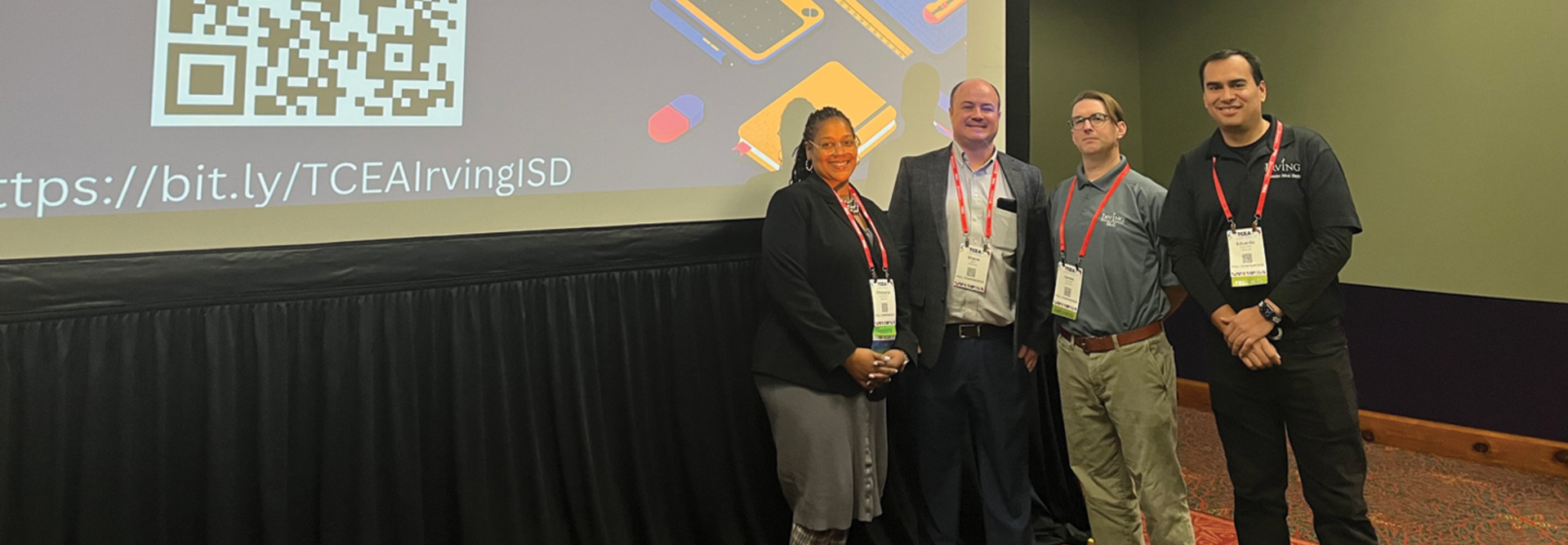4: Invest in Appropriate Staff Support
The Irving ISD team also noted that having highly trained staff was essential to their success. The district ensured that there were enough digital learning coaches or librarians who could teach students and staff how to use and maintain the devices. Certified campus technicians were also available to handle asset management and in-house repairs.
DISCOVER MORE: Learn how one former CTO supports digital equity.
5: Provide Backup Devices for Students
Student devices are integrated into Irving ISD’s curriculum, so when a student damages or loses a device, he or she doesn’t have to wait for the device to be repaired. The IT team always has extra devices that are charged and ready to go.
6: Teach Parents and Students to Take Responsibility for Devices
One question that came up during the session was how to address students who repeatedly and intentionally damage their devices. Taking away devices from students is not the answer, the presenters said. Doing so can affect the entire class, not just the careless students, as the teacher may decide to stop using technology in the classroom instead of preparing alternative lesson plans that don’t depend on technology.
To encourage student accountability, the district asks parents to sign a document agreeing to pay for the device if it is damaged, said Chejuana Martin, district digital learning coach. When Irving ISD staff enforce that agreement, parents tend to ensure their students take better care of their devices going forward.
7: Charging Carts Reduce Excuses
The IT team noticed that the first year Chromebook carts were placed in freshman or sophomore classes, one particular barrier to learning was removed: Students who forgot to bring their chargers were still able to use their devices. That prompted the district to expand the deployment of charging carts to the rest of its classrooms.
READ MORE: 5 tips for optimizing storage and charging carts.
8: Train Students to Provide Frontline Tech Support
When Irving ISD discovered that its middle and high school students could do basic troubleshooting, the district decided to add them to the tech team. “We trained students on how to swap a screen on a device or clean up the devices,” explained Eduardo Alva, digital learning coach. “We are also teaching them life skills. After graduating, they usually come back and become campus technicians.”
9: Implement an Asset Management System
The IT team also found value in having asset management software that allowed them to track devices using International Mobile Equipment Identity numbers, phone numbers, names and more. Smith explained that some students are transient; to counter device loss when parent living situations change, the district had to implement an asset management system.
The tool has helped the district locate lost or stolen devices. “Lock down your devices immediately when you know they’re missing,” Smith advised. “I call it the ‘first 48.’ Within the first 48 hours, you might get that Chromebook back, but after that, your odds of retrieving the drive substantially go down.”
DIVE DEEPER: Learn how asset tags can help districts find lost devices.
10: Have a Device Collection Plan
The team also recommended having a plan for collecting devices at the end of the school year. “You won’t use the same process to collect 10 devices in a classroom as you would for collecting 33,000 devices,” Alva said.
Each year, the team plans ahead and uses a hybrid model, asking upper-level tech students and teachers to collect devices and chargers. The district also provides a drop-off location. Once the devices are in hand, campus tech staff evaluates the devices to see which ones need repair.
MORE ON EDTECH: Use data analytics tools to show ed tech’s impact.
11: Data Can Help Coaches and Teachers Understand Usage Patterns
Tiggeman says ClassLink and Canvas give his team a lot of data on how students are using their devices. With that data, the district can see how students are progressing through the learning modules, and teachers can adjust lesson plans if needed.
12: Make a Lifecycle Management Plan
To ensure that the district has a viable device for every student, the Irving ISD team also integrates a lifecycle management plan into its purchase decisions. IT leaders work with the district’s device partners to find out when new processors and operating systems will be available to ensure they’re buying devices that will last for a long time.
Join EdTech as we provide written coverage of TCEA 2023. Bookmark this page and follow us on Twitter @EdTech_K12.












